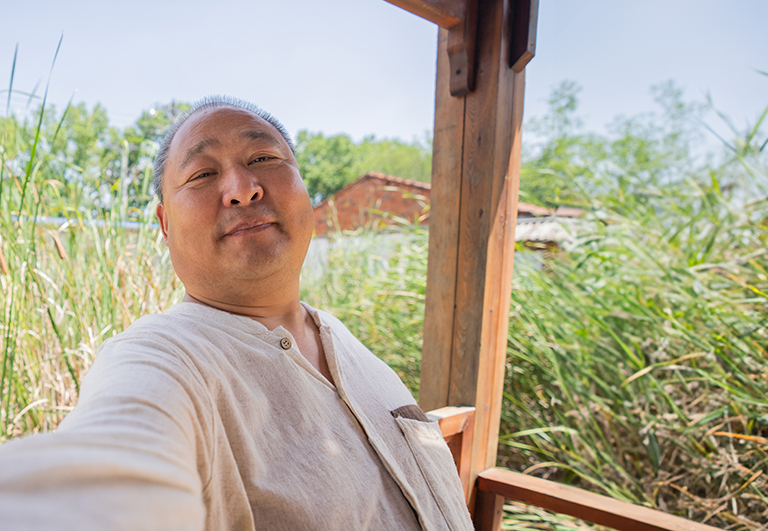
Hatice's Story: A Zest for Life
Hatice Özbiyik’s journey with type 2 diabetes began not with her own diagnosis, but with her mother’s, when she was just 10 years old...

As part of the Long Story Short series, we are sharing the stories of
people around the world who are living with type 2 diabetes. This is
Changsheng's story.
Changsheng grew up full of soul in Wuhan, China. Passionate about singing, exercise and good food, he is a family man who ran his own restaurant, raises turtles and tends to a fruitful garden. His type 2 diabetes journey started with a feeling – something wasn’t quite right in his body, so he visited his doctor ...
Changsheng’s doctor prescribed insulin to help manage his diabetes, but during periods of high stress and long hours in the restaurant, Changsheng’s routine would slip. He became inconsistent with his medication, and sometimes stopped taking it altogether.
Sound familiar? His story is not unique. For many people with type 2 diabetes, the need to introduce and stick to a new routine, and a desire to avoid administering injections, represent significant barriers to starting and maintaining insulin therapy1-3.
Changsheng now says that it was a mistake to think that he could control his diabetes with diet and exercise alone. Changsheng started on insulin, but was inconsistent in taking it due to his busy schedule. For a while, he thought his diabetes was controlled, so he stopped treatment. This led to his symptoms worsening again. He soon started experiencing the symptoms of unmanaged blood sugar levels4. With numbness, pain, sores, skin irritation and difficulty sleeping, he lost his ability to work, stopped enjoying his hobbies and could no longer contribute to family life, making him feel like a burden.
So, Changsheng went back to his doctor, and together they decided he should begin taking medication again, including regularly sticking to an insulin injection routine as prescribed by his physician. When he started prioritising a routine to manage his type 2 diabetes, the difference in how he felt was remarkable.
With his health restored, Changsheng rediscovered joy in simple pleasures – his ability to sing for hours on end came back! He no longer struggled to do the things he loved, and he regained structure in his life; soon he was tending to his vegetables, exercising and playing the strategy board game Xiangqi again.
Perhaps what matters most, however, is the change in Changsheng’s family life. He can live life fully on his own terms again, free from painful symptoms, and he no longer feels like a burden. Changsheng feels reunited with his loved ones and can share responsibilities and cherish quality time together again. His heart is once more full of purpose and love.
Has your doctor spoken to you about insulin therapy, or are you finding it hard to manage your current insulin routine? Read through our guide and take notes on questions you can ask your healthcare professional
HQ24DI00346